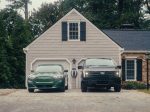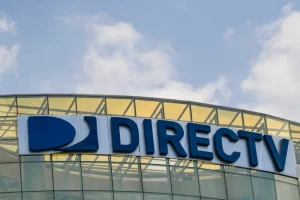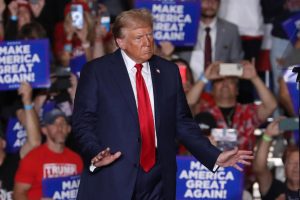
Ford Offering Free EV Home Charger for F-150 Lightning and Mustang Mach-E Aiming to Drive EV Adoption
In the fast-evolving landscape of electric vehicles (EVs), Ford is making a bold move to address one of the biggest barriers to EV adoption—charging. While Ford is already the second-best-selling electric vehicle brand in the U.S., right behind Tesla, it knows there’s still a long road ahead in convincing many drivers to make the switch from gasoline. Enter Ford’s new program, the “Ford Power Promise,” which aims to ease the transition by offering free home chargers and installation with every new purchase or lease of their EVs, including the Ford F-150 Lightning, Mustang Mach-E, and E-Transit cargo van.
A Shift From Range Anxiety to Change Anxiety
Ford’s initiative is driven by research that revealed a surprising finding: the hesitation to go electric isn’t primarily about range anxiety anymore. Instead, it’s what Ford calls “change anxiety”—the psychological hurdle many consumers face when transitioning from a century-long reliance on gasoline to the new world of electrification. As Martin Delonis, a senior manager with Ford’s electric Model E division, put it, “Shoppers worry about range, charging, and battery health. These aren’t the concerns of [existing EV owners], but they are significant for those considering their first EV.”
The Ford Power Promise directly addresses these concerns by providing buyers with a complimentary Level 2 home charger, along with full coverage of installation costs—a significant value proposition. Given that a typical home EV charger can set buyers back several hundred dollars, and installation costs can range from $2,000 to $10,000, Ford’s offer could be the tipping point for many prospective EV buyers.
Bridging the Knowledge Gap on Home Charging
While early adopters of EVs are already well-versed in the convenience of home charging, Ford’s research shows that many potential buyers are still unfamiliar with this concept. According to their data, 46% of EV shoppers don’t understand how home charging works, compared to the 92% of current EV owners who find it as easy as charging a smartphone.
Most electric vehicle owners rarely use public fast chargers, with 79% charging primarily at home. However, many new EV shoppers overestimate their need for public charging and the range required for daily driving. Delonis explains, “Electric vehicle shoppers believe they need a minimum of 350 miles, but most won’t drive over 290 miles in a single day at all.”
By offering a free home charger and installation, Ford hopes to encourage more drivers to charge their EVs at home and realize the convenience of “passive fueling” overnight—waking up each morning to a fully charged vehicle, ready for the day ahead.
More Than Just a Charger
Ford’s new program isn’t limited to free chargers. The Ford Power Promise also includes 24/7 technical support for any EV-related issues, complimentary roadside assistance in case you run out of power, and a battery warranty covering eight years or 100,000 miles. The automaker is going all-in to make its EVs not just desirable but practical and convenient for mainstream consumers.
Moreover, Ford is encouraging its dealerships to step up and educate customers about the benefits of EV ownership, through initiatives like the Ford University program, which aims to equip salespeople with the knowledge needed to bridge the perception gap for shoppers.
A critical factor in the success of the Ford Power Promise will be how well Ford’s dealership network embraces and promotes the new perks. In the past, Ford has faced challenges with its dealers over EV certifications, leading to friction and even lawsuits. However, Ford has since revamped its approach, and company officials express optimism about the role dealers will play in this new push.
Becca Anderson, a senior director at Ford Model E, underscored this commitment, stating, “We’re the only ones doing this. This means less stress and more convenience for our customers.” Ford hopes this strategy will differentiate them from competitors like Honda and Acura, who offer home chargers with their EVs but fall short of covering installation costs as comprehensively as Ford does.
Ford’s Future in the EV Market
Ford’s foray into making EV ownership easier is part of a broader strategy to solidify its place in the electric vehicle market. Despite strong sales, Ford’s EV division has not been without its challenges. Some models have been delayed, and Wall Street hasn’t been thrilled with the division’s financial performance. Nevertheless, Ford is committed to its electric future, with plans to introduce a new low-cost EV platform that could spawn multiple models in the coming years.
The Ford Power Promise is an important step in Ford’s efforts to drive EV adoption and maintain its position as a leading player in the electric vehicle market. By addressing consumer concerns head-on with practical solutions, Ford is positioning itself not just as an automaker but as a partner in the electrification journey.
Why Now could be the Best Time to Buy a Ford EV
With the introduction of the Ford Power Promise, it’s clear that there’s never been a better time to consider buying a Ford EV. Whether you’re eyeing the high-performance Mustang Mach-E, the workhorse F-150 Lightning, or the versatile E-Transit, Ford’s new program offers compelling reasons to make the leap into electric ownership. Not to mention, you can also claim your free NACS (North American Charging Standard) adaptor so you may charge your Ford EV up at local Tesla Supercharging stations. The combination of a free home charger, installation coverage, and a suite of support services makes owning a Ford EV more convenient—and affordable—than ever before.


